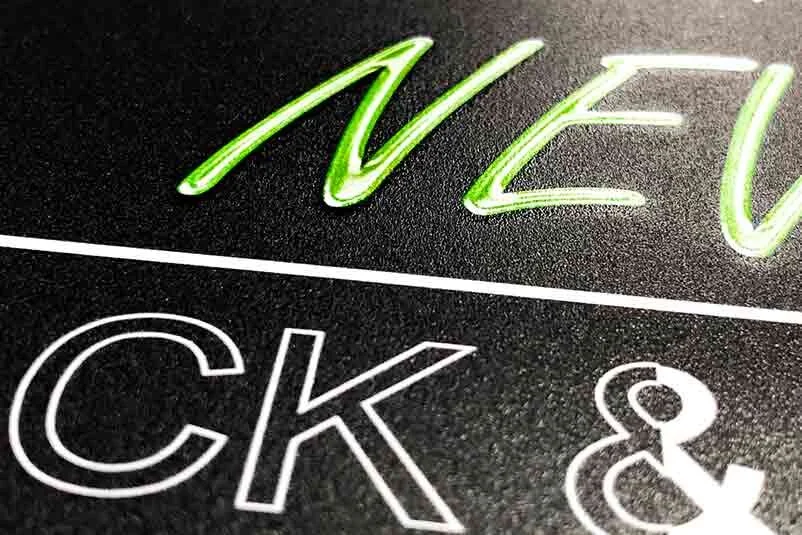The Importance of White Ink
It's true that we print CMYK, but that's not the full truth. In reality, and depending on the printer being used, we are either printing CMYKWG or CMYKLcLmLkW
Now in order to keep everything simple, right now lets focus on the "W".
White ink, a relatively new addition to the digital print industry, has opened many doors in terms of what's possible. We can now skip more expensive steps that had to be taken before. If you wanted a colorful print on a dark substrate before, you had to use printed vinyl or cut vinyl and mount it. A vinyl mount was the only way for colors to show up and be vibrant on a dark surface, until white ink came along and allowed printers to turn any spot of any surface white. Letting colors that wouldn't have shown up before, look just as vibrant on dark materials as they do on white materials.
“White ink is most commonly applied as a base layer on colored, metallic, or clear stocks. In these applications, white ink is printed first followed by cyan, magenta, yellow, and black inks on top. In these instances, the white ink is used to overcome the color of the paper or other substrate providing a white background or base. On clear substrates, white is necessary to prevent light from passing through and washing out and affecting other colors.”
Underlays
White ink is an amazing tool to use not only because it allows us to print white images and text on colored and clear material, but also because using an underlay of white can make colorful prints really show up and pop on colored and clear materials. If you need a print done on black sintra, for example, of course most colors wont show up well. However, using a layer of white underneath the color will make it bright, vibrant, and easy to see. You can also put a white layer under clear vinyl or substrate prints to make sure the print is vibrant and not washed out when applied or put up.
Overlays
Another great use for white ink is reverse prints on clear material. Being able to print white allows us to reverse print either white or color onto clear material, then add a white layer on top of the print to make sure your image doesn't looked washed-out when adhered to a window. Printing a reversed image or text allows you to place the clear vinyl on the interior side of a window and have the image/text appear normal to people looking at it from the exterior. This allows for more freedom when making and installing graphics allowing you to place them in places you want to, instead of places you have to. This also ensures a longer life span of your print because it eliminates most weather conditions and people messing with or peeling up your graphics. All without sacrificing quality or color.
White Only
If you want to print white on colored vinyls or substrates you can. This is helpful when you want either a color that printers can't match or something like metallic, chrome, or reflective. We can just take the material that already has the properties you want and print white text/images directly on it.
If you have any questions or would like to order some white ink prints, let us know!



